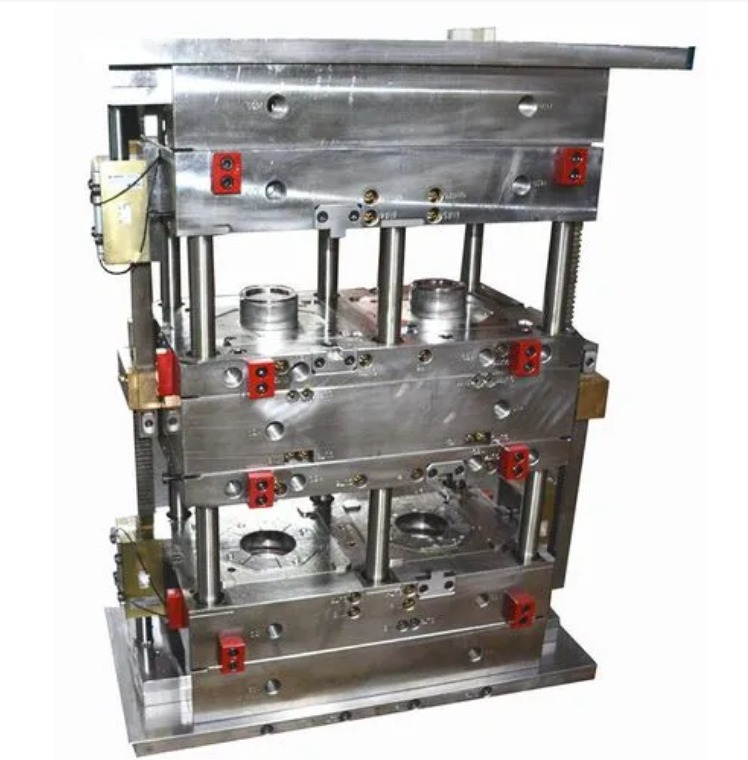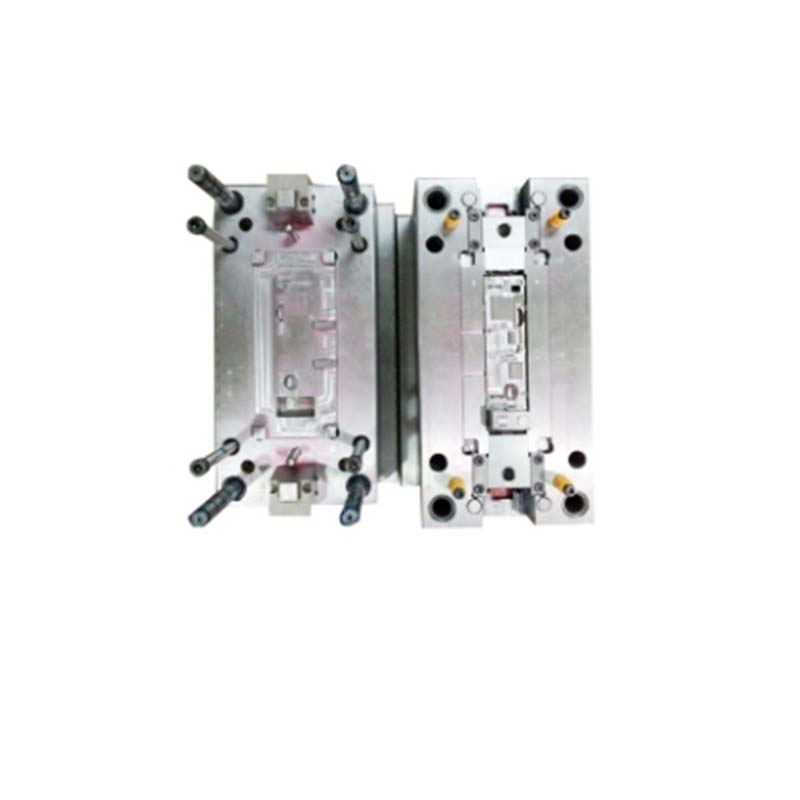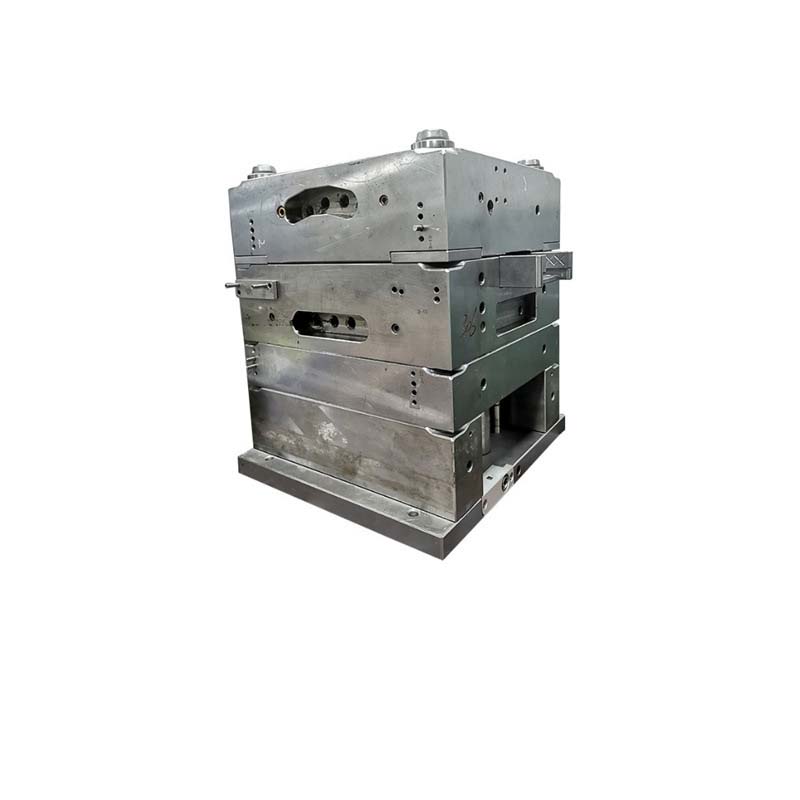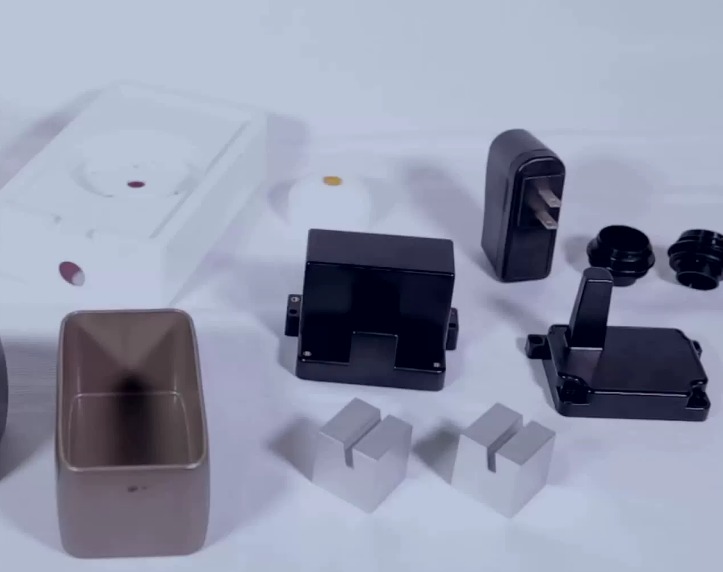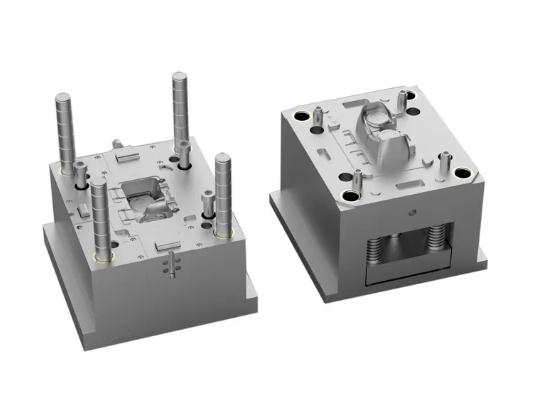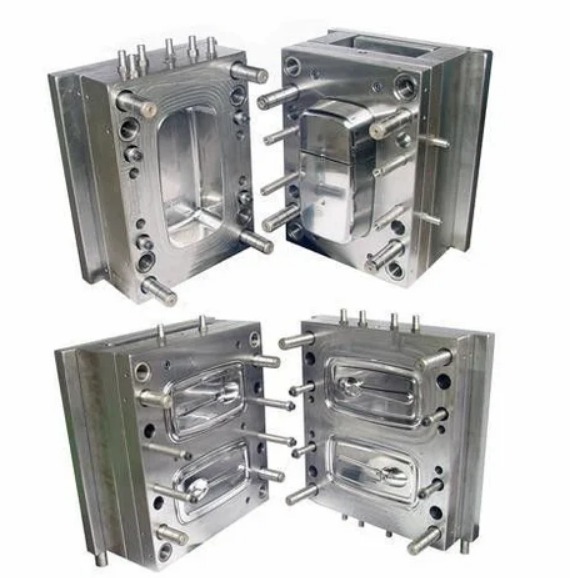What Exactly is a Silicone Rubber Mold?
A silicone rubber mold, at its core, is an elastomeric mold crafted from silicone rubber, renowned for its flexibility, durability, and high-temperature resistance. Silicone rubber itself is a polymer composed of silicon, carbon, hydrogen, and oxygen atoms, which gives it unique properties distinguishing it from traditional rubber materials.
Silicone rubber molds are often made from room - temperature vulcanizing (RTV) silicone rubber. This type of silicone comes in a two - part system: a base component (usually referred to as part A) and a curing agent (part B). When the two components are mixed in the appropriate ratio (commonly around 10:1 to 100:1, depending on the specific product), a chemical reaction called cross - linking occurs. This cross - linking transforms the liquid silicone into a solid, elastic rubber, forming the mold.
The base component contains the silicone polymer chains, while the curing agent initiates the cross - linking process. For example, in a platinum - catalyzed RTV silicone system, the curing agent contains platinum compounds that catalyze the reaction between vinyl groups on the silicone polymer chains and hydrosilane groups, creating a three - dimensional network structure. This structure is what gives the silicone rubber mold its characteristic flexibility and resilience.
One of the key features of silicone rubber molds is their ability to replicate intricate details accurately. The low viscosity of the liquid silicone before curing allows it to flow easily into every nook and cranny of a master pattern. Whether it's a detailed figurine, a complex jewelry design, or a precision - engineered component, a silicone rubber mold can capture the finest details with remarkable fidelity. This makes it an ideal choice for industries such as art, jewelry making, and small - scale manufacturing where high - precision replication is crucial.
The Intricate Manufacturing Process of Silicone Rubber Molds
Step - by - Step Manufacturing Process
- Preparation of the Master Pattern: The first step is to create or obtain a master pattern. This can be a 3D - printed model, a hand - carved sculpture, or an existing object that needs to be replicated. For example, if you are making a mold for a unique jewelry piece, the original jewelry design will serve as the master pattern. The master pattern should be clean, smooth, and free of any defects as these will be replicated in the final mold.
- Mold Box Preparation: A mold box is prepared to contain the liquid silicone during the casting process. The mold box can be made of materials like plastic, wood, or metal. For small - scale projects, a simple plastic container might be sufficient. The mold box should be sized appropriately to accommodate the master pattern with enough space around it to allow for the silicone to form a thick enough mold wall, usually around 5 - 10 mm.
- Application of Release Agent: A release agent is applied to the master pattern and the inner surfaces of the mold box. This ensures that the cured silicone rubber mold can be easily separated from the master pattern and the mold box. There are various types of release agents available, such as wax - based, silicone - based, and fluoropolymer - based. For a silicone rubber mold, a silicone - based release agent is often a good choice as it is compatible with the silicone material.
- Mixing the Silicone Components: The base polymer (part A) and the cross - linking agent (part B) are mixed thoroughly according to the recommended ratio. This mixing should be done carefully to ensure an even distribution of the cross - linking agent throughout the base polymer. Mechanical mixers can be used for larger quantities, while for smaller batches, manual mixing with a stirrer can be sufficient. After mixing, the silicone mixture may need to be degassed to remove any air bubbles that could cause defects in the mold. This can be done using a vacuum chamber.
- Pouring the Silicone: The degassed silicone mixture is slowly poured into the mold box containing the master pattern. The pouring should be done in a way that minimizes the formation of new air bubbles. For complex master patterns, it may be necessary to pour the silicone from multiple points or use a technique like vibrating the mold box gently to help the silicone flow into all the details.
- Curing Process: The silicone rubber mold is then left to cure at room temperature or, in some cases, at an elevated temperature if a faster cure is required. The curing time can vary from a few hours to overnight, depending on the type of silicone, the temperature, and the thickness of the mold. For example, a thin - walled mold made from a fast - curing RTV silicone might cure in 2 - 3 hours at room temperature, while a thicker mold could take 8 - 12 hours.
- Demolding: Once the silicone has fully cured, the mold is carefully removed from the mold box and separated from the master pattern. This process should be done gently to avoid damaging the mold or the master pattern. If the release agent has been applied correctly, the demolding process should be relatively straightforward.
- Finishing and Trimming: After demolding, the silicone rubber mold may require some finishing touches. This can include trimming any excess silicone, smoothing rough edges, and cleaning the mold to remove any remaining release agent or debris. A sharp knife or scissors can be used for trimming, and a mild detergent can be used for cleaning.
Let's take the example of creating a silicone rubber mold for a small, detailed statue of a Buddha. First, a high - quality 3D - printed model of the Buddha statue is obtained as the master pattern. A rectangular plastic mold box is selected, and the inner sides are lined with a thin layer of a silicone - based release agent. The master pattern is also coated with the release agent. Then, a two - part RTV silicone rubber is prepared. The base polymer and the cross - linking agent are mixed in a ratio of 10:1 (for example). The mixture is stirred thoroughly for about 2 - 3 minutes and then placed in a vacuum chamber for 5 - 10 minutes to degas. The degassed silicone is slowly poured into the mold box with the Buddha statue inside. The mold box is then left undisturbed at room temperature for 6 - 8 hours to allow the silicone to cure completely. After curing, the mold is carefully removed from the box, and the Buddha statue master pattern is gently separated from the silicone mold. Any excess silicone around the edges of the mold is trimmed using a sharp craft knife, and the mold is cleaned with a damp cloth to remove any residue. Now the silicone rubber mold is ready to be used for casting replicas of the Buddha statue.
Wide - Ranging Applications of Silicone Rubber Molds
Silicone rubber molds have found their way into numerous industries, each taking advantage of their unique properties in different ways.
Investment Casting
In investment casting, silicone rubber molds play a crucial role. They are used to create wax patterns that are then used to produce metal castings. For example, in the aerospace industry, many small, complex metal components are produced through investment casting with silicone rubber molds. A leading aerospace parts manufacturer reported that by using silicone rubber molds in their investment casting process, they were able to achieve a 30% reduction in the defect rate of their cast parts. This is because the high - detail replication ability of silicone rubber molds ensures that the wax patterns accurately represent the final metal part, reducing the likelihood of casting flaws such as porosity or incorrect dimensions. The flexibility of the silicone rubber also allows for easy removal of the wax pattern from the mold, which is essential for the investment casting process.
Jewelry Industry
The jewelry industry heavily relies on silicone rubber molds for creating intricate jewelry designs. Artisans can create a master jewelry piece and then use a silicone rubber mold to reproduce it multiple times. A well - known jewelry studio stated that they can produce up to 50 identical pieces of a particular jewelry design in a week using a single silicone rubber mold. This not only speeds up the production process but also ensures consistency in the quality and design of the jewelry. Whether it's a delicate pendant with fine filigree work or a complex ring design, silicone rubber molds can capture every detail, allowing for the mass production of high - quality jewelry at a reasonable cost.
Centrifugal Casting
Centrifugal casting is another area where silicone rubber molds are utilized. In the production of certain types of pipes and tubes, silicone rubber molds are used to create the inner and outer molds. A company specializing in the production of small - diameter, high - precision metal tubes reported that by using silicone rubber molds in their centrifugal casting process, they were able to increase their production efficiency by 25%. The high - temperature resistance of silicone rubber molds allows them to withstand the heat generated during the centrifugal casting process, while their flexibility enables easy demolding of the cast products.
Replication of Ancient Bronzes
In the field of cultural heritage preservation and replication, silicone rubber molds are used to replicate ancient bronzes. Museums and cultural institutions often need replicas of valuable artifacts for display or educational purposes. A recent project to replicate a set of ancient Chinese bronzes for a traveling exhibition used silicone rubber molds. The replicas were so accurate that they could pass a visual inspection by experts, with a 98% similarity in surface details and dimensions compared to the original bronzes. The ability of silicone rubber molds to capture the fine surface textures and inscriptions on the ancient bronzes was crucial for the success of this project.
High - Frequency Molding
In high - frequency molding applications, such as the production of some plastic components with embedded metal inserts, silicone rubber molds are preferred. A manufacturer in the electronics industry that produces plastic enclosures with metal - threaded inserts for circuit boards found that using silicone rubber molds reduced the production time per unit by 15%. The flexibility of the silicone rubber allows for easy release of the molded plastic parts with the embedded inserts, and the high - temperature resistance ensures that the mold can withstand the heat generated during the high - frequency molding process.
Yigu Technology's Insights
As a non - standard plastic and metal products custom supplier, Yigu Technology highly values the role of silicone rubber molds. In the early stage of product development, silicone rubber molds can quickly verify product designs. For example, when developing a new electronic device prototype, a silicone rubber mold can be made rapidly to produce sample parts for functional testing, saving a significant amount of time compared to traditional metal molds.
In small - batch production, silicone rubber molds can effectively reduce costs. Their relatively low - cost raw materials and simple manufacturing process make them an ideal choice. For instance, for a small - scale production of customized toys, using silicone rubber molds can keep the production cost down while still ensuring product quality.
Moreover, the high flexibility of silicone rubber allows for the production of products with complex shapes. Yigu Technology is committed to continuously optimizing the production process of silicone rubber molds, leveraging advanced techniques and high - quality raw materials. By doing so, they aim to provide customers with more excellent silicone rubber mold solutions, whether it's for product prototyping or small - scale production needs.
FAQs
What is the typical lifespan of a silicone rubber mold?
Under normal usage conditions, the lifespan of a silicone rubber mold is influenced by several factors, such as the frequency of use and the complexity of the products being molded. On average, a well - maintained silicone rubber mold can be used anywhere from 50 to 300 times. For simple, low - stress applications like making small, smooth - surfaced jewelry pieces, the mold might last up to 300 uses. However, if the mold is used frequently for complex, high - detail parts with sharp edges and under high - stress conditions during demolding, its lifespan could be closer to 50 uses.
Can silicone rubber molds be used for high - volume production?
Silicone rubber molds are typically more suitable for small - batch production due to their relatively soft nature compared to metal molds. However, with advancements in materials and manufacturing processes, they can, to some extent, meet the requirements of medium - volume production. By using high - quality silicone rubber materials with enhanced durability and optimizing the mold design to reduce stress during the molding process, silicone rubber molds can be used for producing a few hundred to a few thousand parts in a production run. But for large - scale, high - volume production (tens of thousands or more parts), metal molds are generally a more cost - effective and reliable choice.
How do I store silicone rubber molds to extend their lifespan?
To extend the lifespan of silicone rubber molds, store them in a dry, cool place, away from direct sunlight. Sunlight contains ultraviolet (UV) rays that can degrade the silicone over time, causing it to become brittle. Also, keep the molds away from chemical substances, especially strong solvents and acids. These chemicals can react with the silicone, altering its properties and reducing its flexibility and durability. It's best to store the molds in a sealed container or wrapped in a clean, non - reactive material like plastic film when not in use.
